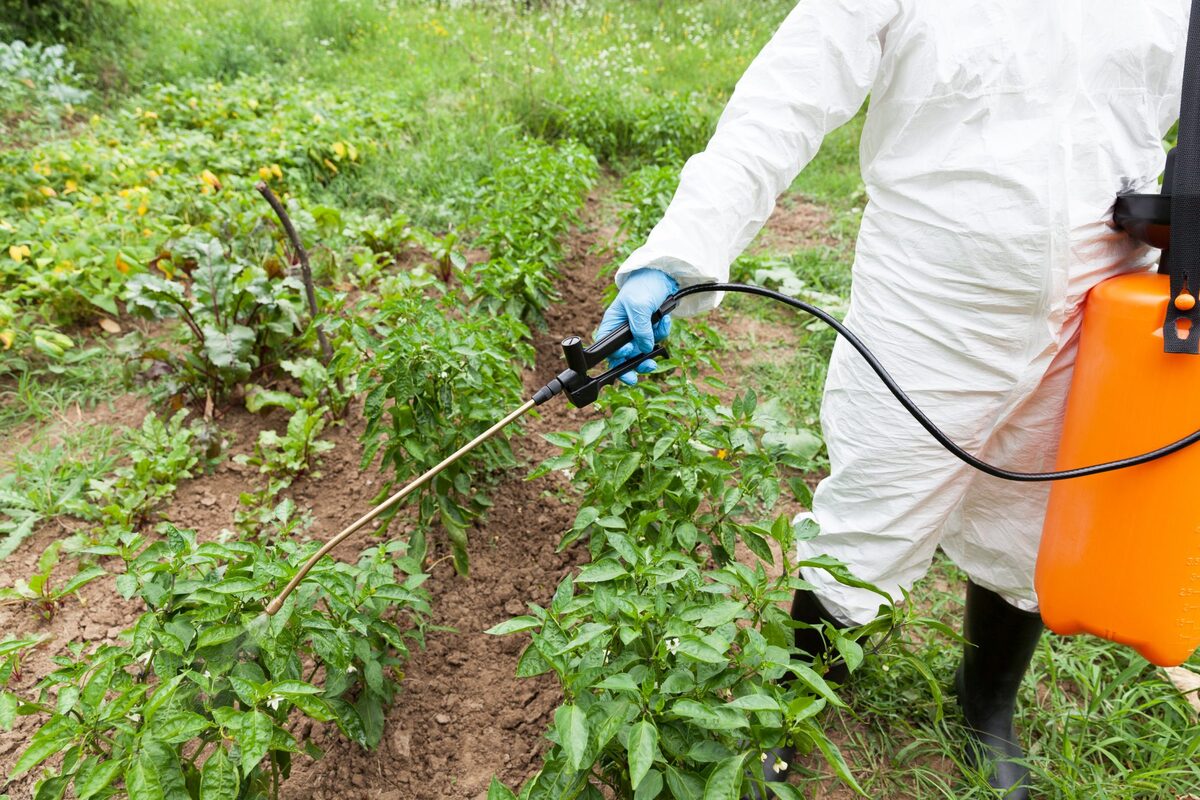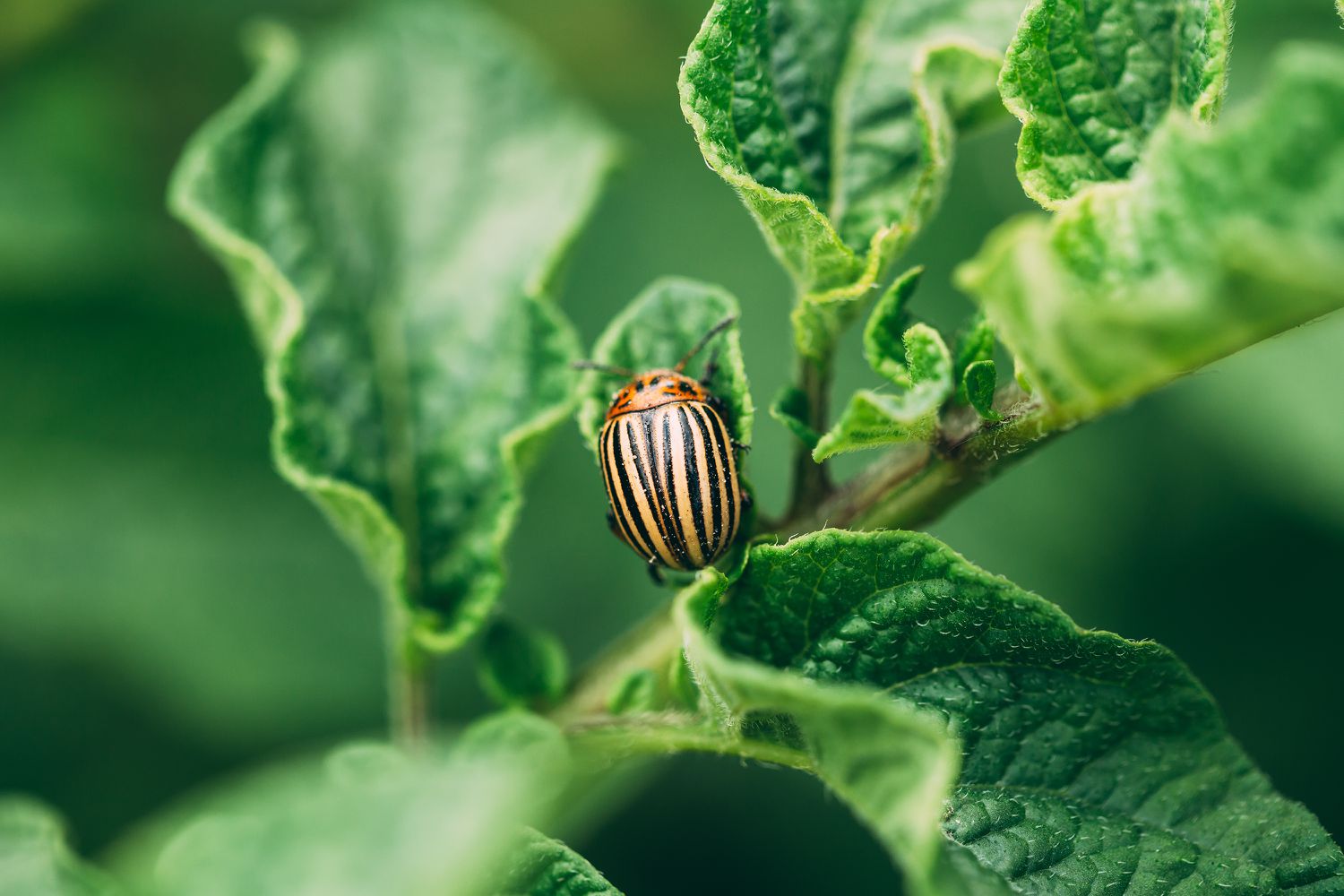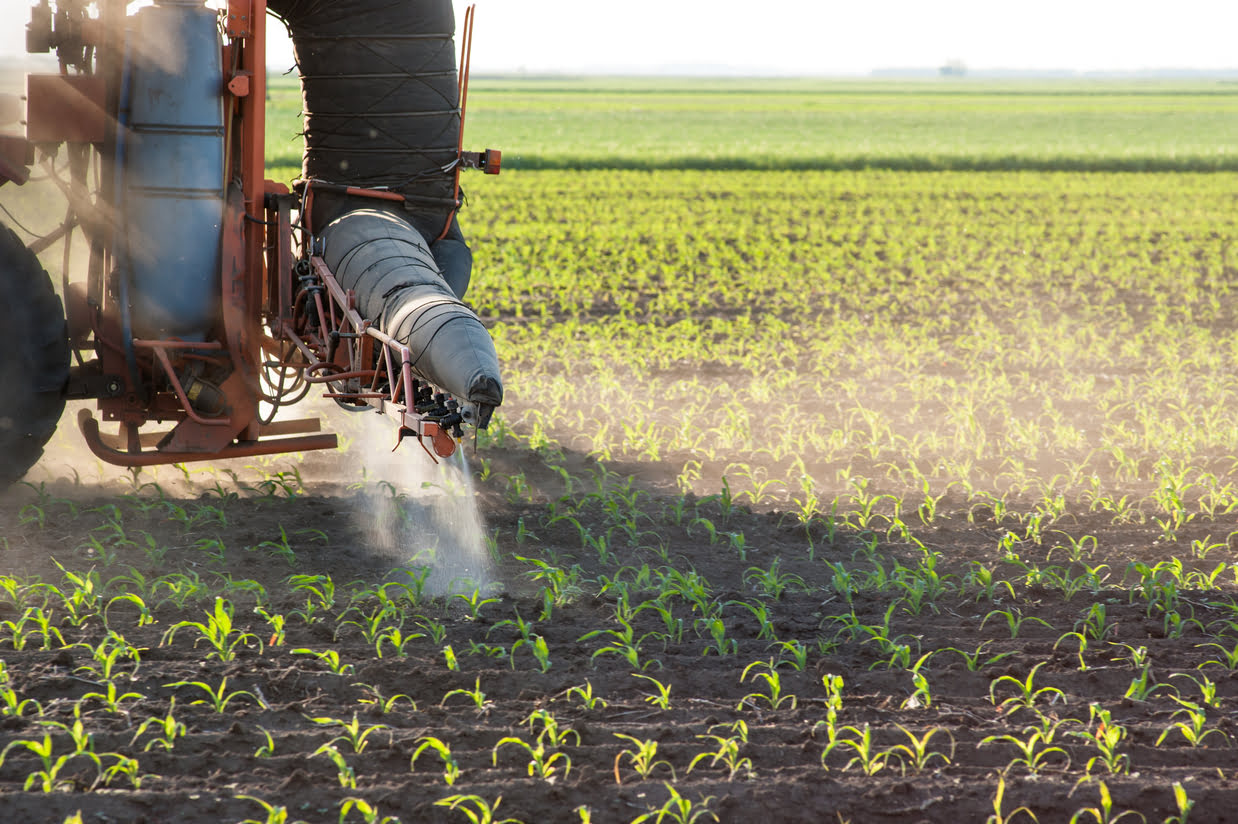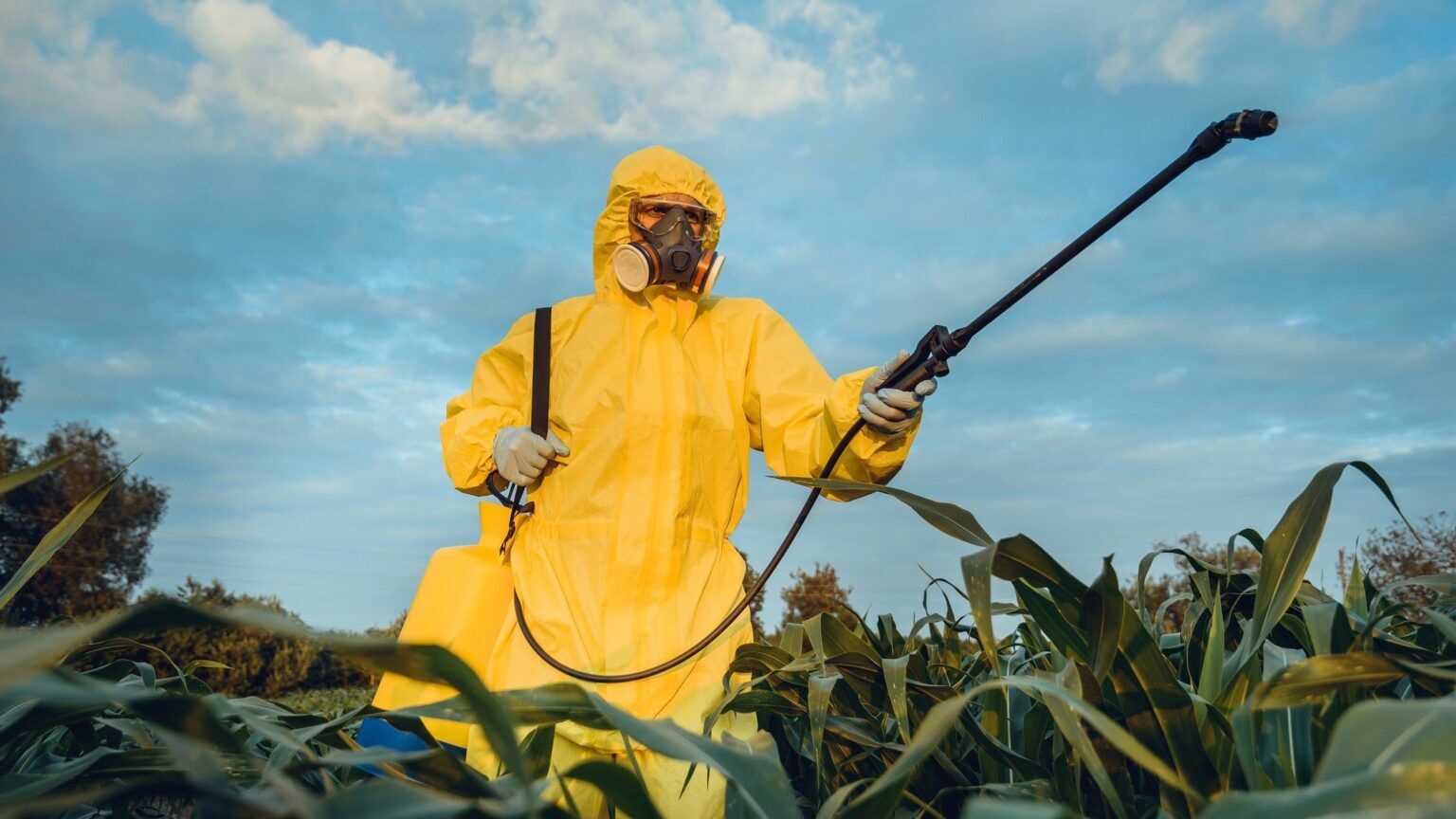Home>Gardening News and Trends>Latest News>What Is Synthetic Pesticides


Latest News
What Is Synthetic Pesticides
Modified: January 22, 2024
Discover the latest news on synthetic pesticides and their impact on the environment. Stay informed and learn about alternative solutions for a healthier planet.
(Many of the links in this article redirect to a specific reviewed product. Your purchase of these products through affiliate links helps to generate commission for Chicagolandgardening.com, at no extra cost. Learn more)
Table of Contents
Introduction
Pesticides play a crucial role in modern agriculture by protecting crops from pests and diseases, ensuring higher yields, and maintaining food security. Among the different types of pesticides available, synthetic pesticides are widely used due to their effectiveness in controlling pests. However, there is growing concern about the environmental and health risks associated with the use of synthetic pesticides.
Synthetic pesticides are chemical-based substances that are manufactured to kill or repel pests, including insects, weeds, and fungi. These pesticides are created through a synthetic process, which means they are chemically engineered rather than derived from natural sources. The development of synthetic pesticides has revolutionized agriculture by providing farmers with powerful tools to combat pest infestations and maximize crop productivity.
However, along with their undeniable benefits, synthetic pesticides come with a range of potential drawbacks. Their extensive use has raised serious environmental concerns, as these chemicals can contaminate soil, water, and air. The indiscriminate application of synthetic pesticides poses a threat to biodiversity by killing beneficial insects, birds, and other non-target species, disrupting ecosystems and reducing biodiversity.
Moreover, the impact of synthetic pesticides extends beyond the environment to human health. Prolonged exposure to these chemicals through direct contact, inhalation, or ingestion can have adverse effects on human health. Studies have linked synthetic pesticides to various health issues, including cancer, reproductive disorders, neurological disorders, and hormone disruption.
In recent years, there has been a growing interest in finding alternative approaches to reducing reliance on synthetic pesticides. Integrated Pest Management (IPM) techniques are gaining popularity, which involve a multi-faceted approach to pest control, including biological control, crop rotation, and the use of resistant varieties. Organic farming practices also emphasize the use of natural methods and substances to minimize the use of synthetic pesticides.
Regulatory bodies worldwide are working towards stricter regulations and restrictions on the use of synthetic pesticides. This includes setting maximum residue limits and promoting the use of safer alternatives. The aim is to reduce the impact on the environment and protect human health while still meeting the agricultural needs of the population.
Now more than ever, it is important to explore the risks associated with synthetic pesticides and consider alternative methods of pest control that are more sustainable and environmentally friendly. By understanding the implications of using synthetic pesticides and embracing alternative approaches, we can move towards a healthier and more sustainable future for agriculture.
Definition of Synthetic Pesticides
Synthetic pesticides are chemical-based substances that are specifically designed to control and eliminate pests that can damage crops, transmit diseases, or pose a threat to human health. Unlike natural pesticides that are derived from plant extracts, minerals, or other natural sources, synthetic pesticides are chemically engineered and developed in laboratories.
These pesticides are classified based on their chemical composition and mode of action. They can be classified into various categories, including insecticides, herbicides, fungicides, and rodenticides. Insecticides are designed to control and exterminate insects, herbicides target weeds, fungicides combat fungal diseases, and rodenticides are formulated to eradicate rodents.
Synthetic pesticides are formulated with active ingredients that have toxic properties, which effectively disrupt the physiology or life cycle of the targeted pests. These active ingredients can include compounds such as organophosphates, pyrethroids, neonicotinoids, and glyphosate, among others. The choice of active ingredient depends on the type of pest being targeted and the desired mode of action.
One of the key characteristics of synthetic pesticides is their persistence. Unlike natural pesticides that may degrade more rapidly, synthetic pesticides are designed to have a longer-lasting effect. This persistence allows them to remain active in the environment for extended periods, providing extended protection against pests.
The widespread use of synthetic pesticides in modern agriculture has significantly increased crop yields and helped in the prevention of crop losses due to pests and diseases. However, the continued and excessive use of these pesticides has raised concerns about their impact on the environment and human health.
It is important to note that the term “synthetic pesticides” is often used interchangeably with “conventional pesticides” or “chemical pesticides.” This is because synthetic pesticides are the most commonly used type of pesticide in conventional farming, where chemical inputs are heavily relied upon for pest management.
Overall, synthetic pesticides are chemically engineered substances that are used to control and eliminate pests in agriculture. While they have played a critical role in increasing agricultural productivity, their potential negative impacts on the environment and human health make it necessary to explore alternative approaches to pest management that are more sustainable and ecologically friendly.
Types of Synthetic Pesticides
Synthetic pesticides are categorized into various types based on their target pests and the mode of action. The different types of synthetic pesticides include insecticides, herbicides, fungicides, and rodenticides.
Insecticides:
Insecticides are synthetic pesticides specifically designed to control and eliminate insect pests. They target insects that can cause significant damage to crops, transmit diseases, or interfere with human activities. Insecticides work by disrupting the nervous system or physiological processes of the insects, leading to their paralysis or death. Examples of commonly used insecticides include organophosphates, pyrethroids, neonicotinoids, and carbamates.
Herbicides:
Herbicides are synthetic pesticides developed to control and eliminate unwanted plants or weeds. They are used to prevent the growth and spread of weeds, which can compete with crops for nutrients, water, and sunlight. Herbicides can be selective, targeting specific types of weeds, or non-selective, which means they kill all plant species they come into contact with. Glyphosate, a widely used herbicide, is effective against a broad spectrum of weeds and is commonly used in conventional farming practices.
Fungicides:
Fungicides are synthetic pesticides used to combat fungal infections and diseases in plants. Fungi can cause significant damage to crops, leading to reduced yields and compromised quality. Fungicides work by inhibiting the growth and reproduction of fungi, preventing the spread of diseases. Different types of fungicides are available, including contact fungicides that form a protective barrier on the plant surface and systemic fungicides that are absorbed by the plant and provide internal protection.
Rodenticides:
Rodenticides are synthetic pesticides developed to control and eliminate rodents, such as rats and mice, which can cause damage to crops, contaminate food, and spread diseases. Rodenticides work by targeting the rodents’ nervous system or internal organs, leading to their death. These pesticides are available in various forms, including baits, pellets, and powders, which are effective in attracting and eliminating rodents.
It is important for farmers, gardeners, and pest management professionals to understand the different types of synthetic pesticides and their specific uses. By selecting and applying the appropriate pesticide for a particular pest problem, it is possible to achieve effective pest control while minimizing potential negative impacts on the environment and non-target organisms.
Environmental Impact of Synthetic Pesticides
The use of synthetic pesticides in agriculture has raised concerns about their environmental impact. While these pesticides have been effective in controlling pests and increasing crop yields, their widespread use has resulted in unintended consequences for the environment. Here are some of the key environmental impacts associated with synthetic pesticides:
Contamination of Soil and Water:
One of the significant environmental concerns is the contamination of soil and water with synthetic pesticides. When pesticides are applied to crops, a portion of them can leach into the soil, where they can persist for long periods. This can lead to the depletion of beneficial soil organisms and disrupt the balance of the ecosystem. Pesticides can also be carried by rainwater or irrigation runoff, eventually entering rivers, lakes, and groundwater sources, causing contamination and potential harm to aquatic life.
Impact on Non-Target Organisms:
Synthetic pesticides, designed to target specific pests, can also harm non-target organisms, including beneficial insects, birds, and amphibians. These non-target species may be crucial for maintaining ecosystem balance, providing pollination services, or controlling other pests. The indiscriminate use of pesticides can disrupt the natural food chain, leading to a decline in biodiversity and ecological imbalances.
Development of Pesticide Resistance:
Continuous and excessive use of synthetic pesticides can lead to the development of pest resistance. Over time, pests can develop genetic mutations that make them less susceptible to the effects of the pesticide. This not only reduces the effectiveness of the pesticide but also increases the reliance on stronger and potentially more harmful pesticides.
Impact on Pollinators:
Pollinators such as bees, butterflies, and other insects play a critical role in pollinating crops and ensuring successful fertilization. Synthetic pesticides, especially insecticides, can have detrimental effects on pollinators by killing bees and other beneficial insects or disrupting their natural behavior. The decline in pollinator populations can have significant implications for crop pollination, food production, and overall ecosystem health.
Residual Impact on Wildlife:
Even after the initial application, synthetic pesticides can persist in the environment, leaving residues that can continue to impact wildlife. Animals higher in the food chain, such as birds and mammals, can be exposed to pesticides through the consumption of contaminated prey or plants. This can lead to bioaccumulation, where the concentration of pesticides increases as it moves up the food chain, potentially causing toxicity and physiological abnormalities in these animals.
These environmental impacts highlight the need for responsible pesticide use and the adoption of alternative pest management approaches that are less harmful to the environment. Strategies such as Integrated Pest Management (IPM), which focuses on using a combination of cultural, biological, and chemical control methods, can help reduce reliance on synthetic pesticides and mitigate their adverse effects on the environment.
Health Effects of Synthetic Pesticides
The use of synthetic pesticides in agriculture has raised concerns about the potential health effects on humans. Prolonged exposure to these chemicals, whether through direct contact, inhalation, or ingestion, can have detrimental impacts on human health. Here are some of the health effects associated with synthetic pesticides:
Cancer:
Several studies have suggested a link between exposure to certain synthetic pesticides and an increased risk of cancer. Prolonged exposure to organophosphates, herbicides like glyphosate, and certain insecticides has been associated with a higher likelihood of developing various types of cancer, including leukemia, lymphoma, and solid tumors.
Reproductive and Developmental Disorders:
Synthetic pesticides have been linked to reproductive and developmental disorders. Exposure during pregnancy or early childhood has been associated with adverse effects on reproductive health, including infertility, miscarriages, and birth defects. Developmental disorders, such as neurodevelopmental disorders and cognitive impairments, have also been observed in children exposed to pesticides.
Neurological Effects:
Many synthetic pesticides have neurotoxic properties and can affect the central nervous system. Prolonged exposure to these chemicals has been associated with neurological effects, including impaired cognitive function, memory loss, and neurobehavioral disorders. Certain insecticides, such as organophosphates and pyrethroids, have been particularly linked to these neurological effects.
Hormone Disruption:
Some synthetic pesticides have the ability to disrupt the endocrine system, which regulates hormones in the body. The exposure to these hormone-disrupting pesticides can lead to hormonal imbalances and interfere with the normal functioning of the reproductive system, metabolism, and growth. This disruption can have wide-ranging effects, including fertility issues, developmental abnormalities, and increased risk of certain diseases.
Allergies and Respiratory Issues:
Exposure to synthetic pesticides has been associated with allergic reactions and respiratory problems. Individuals who are frequently exposed to pesticides, such as farmers and agricultural workers, may experience symptoms such as skin rashes, asthma, coughing, and wheezing. Pesticide drift, where airborne particles of pesticides spread beyond the target area, can also affect nearby communities and contribute to respiratory issues.
It is important to note that the severity of health effects can vary depending on the type of pesticide, dosage, duration of exposure, and individual susceptibility. However, the potential risks associated with synthetic pesticides highlight the need for precautions and the development of alternatives that minimize exposure to these chemicals.
Regulatory bodies and health organizations emphasize the importance of following safety guidelines, using protective gear, and adopting alternative pest management techniques to reduce reliance on synthetic pesticides and protect human health. By prioritizing sustainable and organic farming practices, it is possible to mitigate potential health risks and promote a healthier environment for all.
Alternatives to Using Synthetic Pesticides
As concerns about the environmental and health impacts of synthetic pesticides continue to grow, there is an increasing demand for alternative approaches to pest control. These alternatives aim to reduce reliance on synthetic pesticides while still effectively managing pests. Here are some of the main strategies and alternatives:
Integrated Pest Management (IPM):
IPM is a holistic approach to pest control that focuses on combining various methods to manage pests effectively while minimizing the use of synthetic pesticides. This approach includes practices such as crop rotation, the use of resistant crop varieties, biological control (encouraging natural enemies of pests), cultural control (implementing practices that make the environment less conducive to pests), and mechanical control (physical measures to remove pests). IPM takes into account the biology of pests and their interaction with the environment, aiming for long-term solutions instead of reliance on chemical inputs.
Biopesticides:
Biopesticides are derived from natural materials, such as plant extracts, microorganisms, or naturally occurring substances, and can be an effective alternative to synthetic pesticides. These products target pests while having minimal impact on non-target organisms and the environment. Biopesticides can include microbial pesticides, which consist of living microorganisms that control pests, and botanical pesticides, which are derived from plant extracts and contain naturally occurring compounds with insecticidal properties.
Organic Farming:
Organic farming practices emphasize the use of natural methods and substances to manage pests, reduce soil erosion, and promote soil health. Organic farmers focus on building healthy soil ecosystems, using compost and other organic amendments, and encouraging biodiversity to control pests naturally. Organic farming strictly restricts the use of synthetic pesticides and encourages crop rotation, companion planting, and other practices to minimize pest damage.
Crop Rotation and Polyculture:
Rotating crops and planting a diverse range of crops in close proximity, known as polyculture, can help disrupt pest life cycles and reduce the prevalence of pests. By alternating crop types, pests that specifically target a particular plant are interrupted in their life cycle, reducing their overall impact. Polyculture also helps maintain a balance between pests and their natural enemies, reducing the need for synthetic pesticides.
Cultural and Physical Control Methods:
Cultural and physical control methods involve implementing practices that make the environment less hospitable to pests or physically remove them. Examples include removing pest habitat, practicing good sanitation in agricultural areas, using traps or barriers to physically block pests, and employing mechanical techniques like handpicking or pruning to remove pests from plants.
By adopting these alternative approaches and integrating them into farming systems, it is possible to reduce reliance on synthetic pesticides while managing pest populations effectively. These approaches not only minimize the negative environmental and health impacts associated with synthetic pesticides but also promote long-term sustainability and resilience in agricultural systems.
Regulation and Restrictions on Synthetic Pesticides
In response to the environmental and health concerns associated with synthetic pesticides, regulatory bodies around the world have implemented various measures to regulate and restrict their use. These regulations aim to safeguard human health, protect the environment, and promote sustainable pest management practices. Here are some key aspects of the regulation and restrictions on synthetic pesticides:
Mandatory Registration and Approval:
Most countries require that all synthetic pesticides be registered and approved before they can be sold and used. This process typically involves rigorous scientific evaluation of the pesticide’s effectiveness, safety, and potential risks. Regulatory bodies review the toxicity, environmental fate, and impact on non-target organisms to determine if the pesticide meets safety standards. This ensures that only authorized pesticides that have met specific criteria are available for use in agricultural practices.
Maximum Residue Limits (MRLs):
Regulatory bodies establish Maximum Residue Limits (MRLs), which are the maximum allowable amounts of pesticide residues on or in food products. MRLs are set based on extensive scientific research to ensure that the consumption of food products treated with synthetic pesticides does not pose a health risk to consumers. Monitoring and enforcement of MRLs help maintain the safety and quality of food products in the market.
Restricted Use:
Many countries categorize certain synthetic pesticides as “Restricted Use” pesticides, which means they can only be used by certified applicators or professionals who have undergone specialized training. This restriction helps ensure that these more potent and potentially hazardous pesticides are used responsibly and in accordance with the best practices to minimize negative impacts on the environment and human health.
Bans and Phasing Out:
In response to emerging evidence about the harmful effects of certain synthetic pesticides, regulatory bodies may implement bans or gradually phase out the use of specific pesticides. This can occur when scientific research highlights significant risks, such as high toxicity or detrimental environmental impacts. By banning or phasing out these pesticides, regulatory bodies aim to protect human health and the environment from potentially harmful substances.
Stricter Safety Standards and Testing Requirements:
Regulatory bodies continue to enhance safety standards and testing requirements for synthetic pesticides. This includes new guidelines and protocols for toxicity testing, risk assessments, and environmental impact assessments. The goal is to ensure that the latest scientific advancements and methodologies are used to assess the safety and potential risks of synthetic pesticides comprehensively.
Promotion of Safer Alternatives:
In an effort to encourage the shift away from reliance on synthetic pesticides, regulatory bodies promote the use of safer alternatives through educational campaigns and incentive programs. These initiatives aim to raise awareness about the benefits and availability of alternative pest management practices like Integrated Pest Management (IPM), organic farming, and the use of biopesticides. By highlighting and supporting these alternatives, regulatory bodies encourage the adoption of more sustainable and environmentally friendly approaches to pest control.
Overall, regulatory measures and restrictions on synthetic pesticides ensure that these chemical inputs are used responsibly and in a manner that minimizes their environmental and health risks. The continuous improvement of regulations and the promotion of safer alternatives contribute to the development of more sustainable and ecologically friendly pest management practices in agriculture.
Conclusion
The use of synthetic pesticides in agriculture has undeniably contributed to increased crop yields and effective pest control. However, it is important to recognize and address the environmental and health risks associated with the extensive use of these chemicals.
Synthetic pesticides can have detrimental effects on the environment, including soil and water contamination, the disruption of ecosystems, the development of pesticide resistance, and the decline of beneficial species. Additionally, the potential health impacts on humans, such as increased cancer risks, reproductive disorders, neurological effects, and hormone disruption, highlight the need for precautionary measures and alternative approaches to pest management.
- Integrated Pest Management (IPM) techniques offer a more holistic approach to pest control, focusing on using a combination of methods to reduce pests while minimizing reliance on synthetic pesticides.
- Biopesticides derived from natural sources provide effective alternatives that target pests while having minimal impact on the environment and non-target organisms.
- Organic farming practices prioritize the use of natural methods and substances, minimizing the use of synthetic pesticides and promoting soil health and biodiversity.
- Stricter regulation and restrictions on synthetic pesticides, including mandatory registration, maximum residue limits, and the phasing out of certain pesticides, are essential to protect human health and the environment.
- Education, awareness, and support for sustainable pest management practices are crucial in promoting the adoption of safer alternatives and reducing the reliance on synthetic pesticides.
By embracing these alternative approaches and implementing responsible pest management practices, we can work towards a more sustainable and environmentally friendly agricultural system. The shift towards more eco-friendly practices not only protects the health of our ecosystems but also ensures the safety and well-being of farmers, farmworkers, and consumers.
Ultimately, the reduction of synthetic pesticide use and the promotion of sustainable pest control methods contribute to a healthier environment, increased biodiversity, improved food safety, and the preservation of our planet’s natural resources for future generations.










